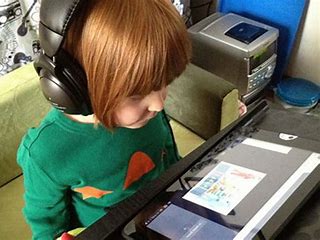What is the most concerning or destructive thing that is going on right now in your child’s world?
Next we look at –
UNIT 7– 5 CAMs
Section 5: CAMs Complementary & Alternative Medicine
PART 2 –
3. anti-inflammatory therapy
4. auditory integration therapy
UNIT 7– 6 CAMs
Section 6: CAMs Complementary & Alternative Medicine
PART 3 –
5. chelation therapy
6. chiropractic
UNIT 7– 5 CAMs Section 5: CAMs Complementary & Alternative Medicine
PART 2 –
Siri, K. (2010) believes that in most cases, it took your child years to develop the GI condition; you need to get him regular for months to shrink the colon back to size. If your child has frequent nighttime awakenings and/or other wetting, they should have a full GI workup; nighttime awakenings can mean reflux, and wettings can mean allergies. The presence of chronic (long-standing) GI symptoms demands medical evaluation.
Many autistic children have evidence of abnormal intestinal permeability, or what we call ‘leaky gut’. We continually find inflammatory bowel disease that is different from Crohn’s disease and ulcerative colitis. Undiagnosed abdominal issues are the cause of many of the behavior symptoms of autism. If you imagine yourself as a nonverbal or poorly communicative individual who has chronic or intermittent abdominal pain, a lot of those behaviors are going to look pretty autistic.
There’s a great body of evidence in the literature documenting immune dysregulation in autistic children leaving them prone to infection, chronic inflammation, and autoimmune reactions; it can affect any organ system, but the brain and the GI tract seem to be the worst hit. Treatments for GI issues have significantly benefited Alex and though still non-verbal, his behaviors, control and vocalizations have improved over the last two years of treatment for those GI issues.
< My Thoughts > “…GI issues…”
So often, one of the side effects of heavy medication may cause constipation, diarrhea, abdominal discomfort, or other GI issues.
UNIT 7– 5 CAMs
Section 5: CAMs Complementary & Alternative Medicine
PART 2 –
4. auditory integration therapy
The most recognized auditory integration therapy seems to be the Berard Method of Auditory Integration Therapy (AIT). According to their website, Berard AIT is to be differentiated from any other sound-based programs. They say that the key program elements require that each practitioner follow the Berard AIT protocol. The key points of this protocol include – 10 days of listening sessions, directly through the Berard AIT designed headphones.
Sokhadzel, E., Casanova, M., et al. (2016) tell us that an auditory integration therapy (AIT) was developed by Dr. Guy Berard to improve sound integration in children with autism.
Parental questionnaires clearly demonstrated behavioral and psycho-physiological changes in impairments in behavioral symptoms such as irritability, hyperactivity, repetitive behaviors.
< My Thoughts > “Parental questionnaires…”
One of the first concerns for parents, and also for classroom teachers, can be discerning the quality of the child’s hearing. When children don’t respond to their name, maybe they are having trouble hearing.
That is rarely the case, but audiology tests are often required to rule out hearing problems. This is when another condition may come to light. Possibly, the child is hearing words, but not able to ‘process’ what is being said. Then, there is a chance the child does not have ‘receptive’ language. Or, has ‘receptive’ language, but for some reason cannot respond with ‘expressive language.
Note: Learn more about ‘receptive/expressive’ language in UNIT3 What Is Most Concerning; Chapter 2 – Speech & Language Communication
Thompson, B. & Andrews, S. (2000) tell us that the originating theories behind the Tomatis Method of audio training was the connection between the brain and the nervous system. He believed that sound stimulation can provide a valuable remediation and developmental training tool.
Decker, J. (2012) divulged that in elementary school, the counselors tried to solve her son Jake’s sensory overload by giving him a huge set of noise-reducing headphones. Yeah, that was nice. Now he not only didn’t fit in, but he had a monstrous set of yellow earphones to even further separate him from his peers. He looked like a big, sweaty bumblebee. Eventually they were replaced with orange ear plugs that he now wears in the gym, in the noisy hallways, and often in the classroom. Add a mini bottle of antibacterial gel to his arsenal of protection, and all he needs is a pocket protector and a lisp and he’s right out of central casting for Nerds III. “I am the Walrus, goo- goo g’joob.”
< My Thoughts > “…monstrous yellow earphones...”
While the study states that headphones playing music may not work for all those trying to cope with sensory processing issues, it seems to work for many. As a parent and educator, I am continually aware of filtering interventions through the process of what is ‘age appropriate’. And, I know that getting someone to accept an ‘earbud’ placed in their ear would require a careful learning-acceptance process, over time. But everywhere you look today, you will see students and adults with that white cord dangling from their ear as they listen to their tunes. So, it becomes ‘age-appropriate’.
References:
Decker, J. (2011). I Wish I Were Engulfed in Flames: My Insane Life Raising Two Boys with Autism; eBooks 2011 Edition.
Luker, S. (2024); Know Autism, Know Your Child with < My Thoughts > by Sara Luker; Retrieved online from – www.sarasautismsite.com
Siri, K. (2010). Siri, K. (2010). 1,001 Tips for the Parents of Autistic Boys; Skyhorse Publishing, N.Y., N.Y.
Siri, K. (2015). 101 Tips for the Parents of Boys with Autism & 1,001 Tips for the Parents of Autistic Boys; eBook Edition.
Sokhadze, E., Casanova, M., et al. (2016). Electroysiological & Behavioral Outcomes of Berard Auditory Integration Training (AIT) in Children with ASD; Applied Psychophysiology & Biofeedback Journal; V41: p405-420.
Thompson, B. & Andrews, S. (2000). An Historical Commentary on the Physiological Effects of Music: Tomatis, Mozart & Neuropsychology; Integrative Physiological & Behavioral Science; V35:3, p 174-188.
Note: DISCLAIMER – Autism ‘intervention’, as with the phrase ‘Early Detection / Early Intervention’, may simply mean to attempt an ‘action’, or attempt to ‘change a course’ or ‘trajectory’ of the person’s autism. Any expectation for a successful ‘change’ must have the cooperation of the participant, the parent, and/or the assigned therapist. Words such as, ‘intervention’, ‘treatment’, ‘therapy’, ‘service’, or ‘program’ imply ‘cure’, or ‘long-term’ positive effect. That is NOT my intention here, and all information is presented without intent or suggestion of status or effectiveness.
End of DAY TWENTY-FOUR.
Note: Excerpts from the books – (13% indicates location in the Kindle version of the eBook, instead of page numbers).
Sharing of my website and BLOG Comments welcomed. Thank-you to those of you who have sent comments... much appreciated!
Regards,
Sara Luker


 RSS Feed
RSS Feed